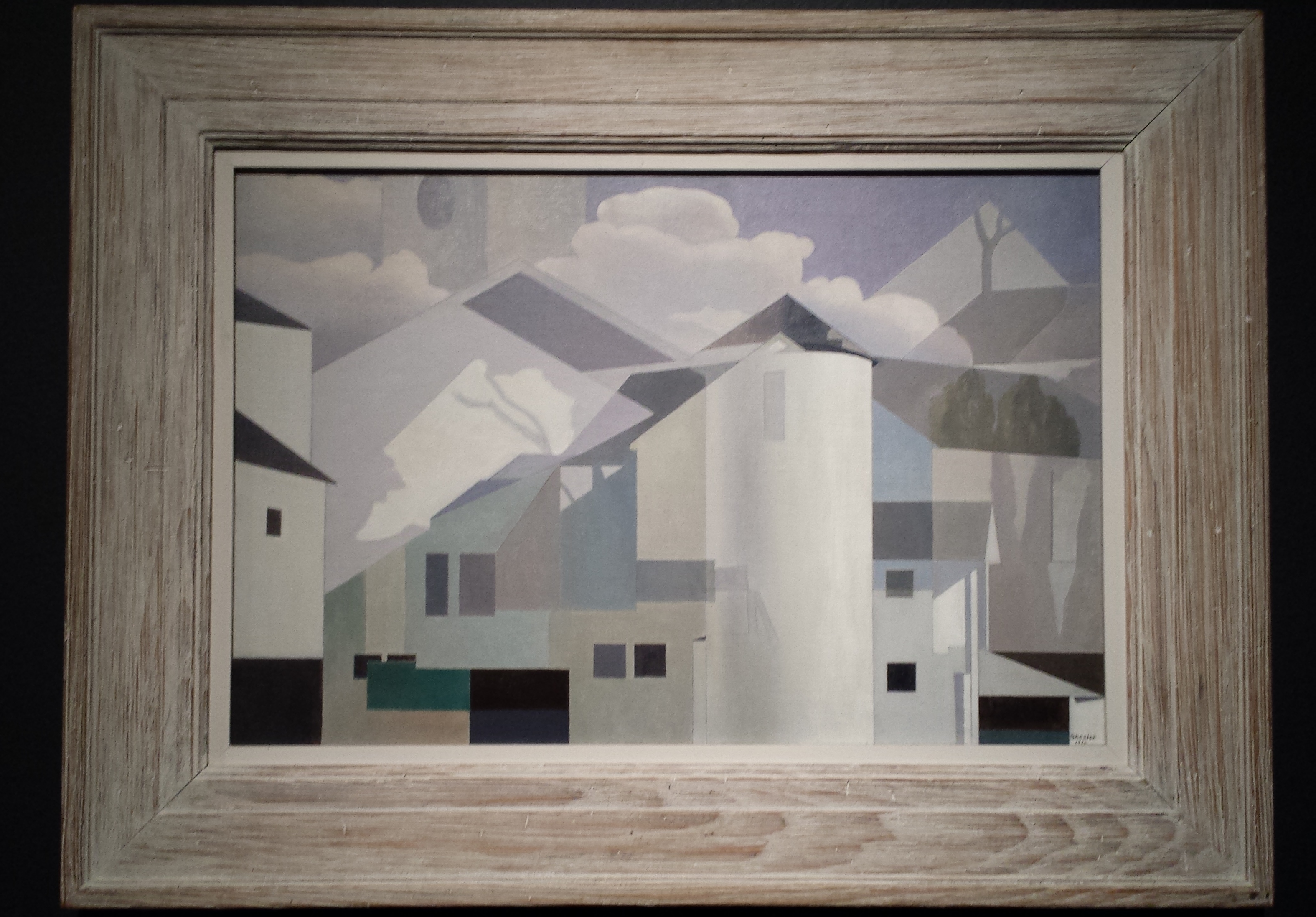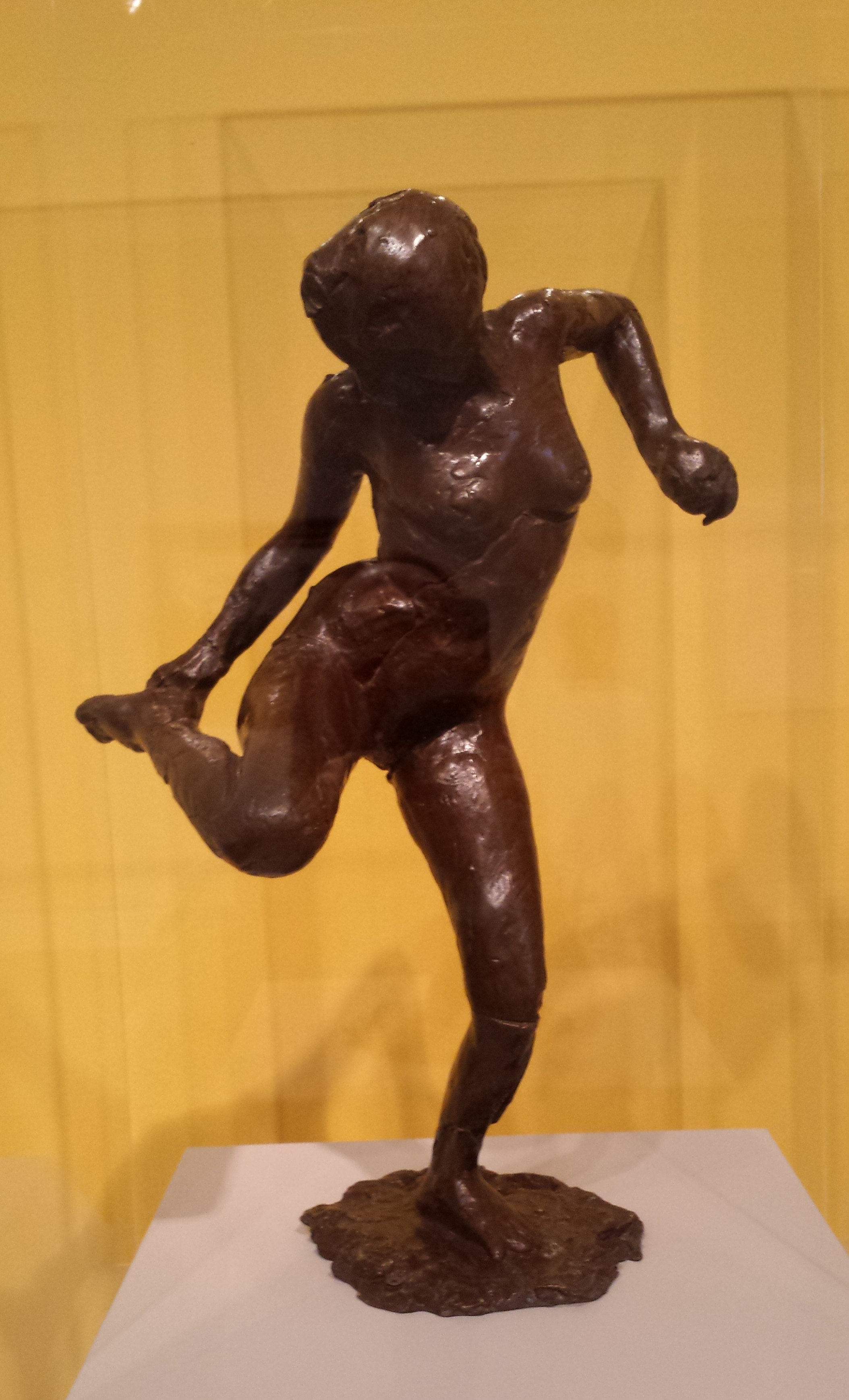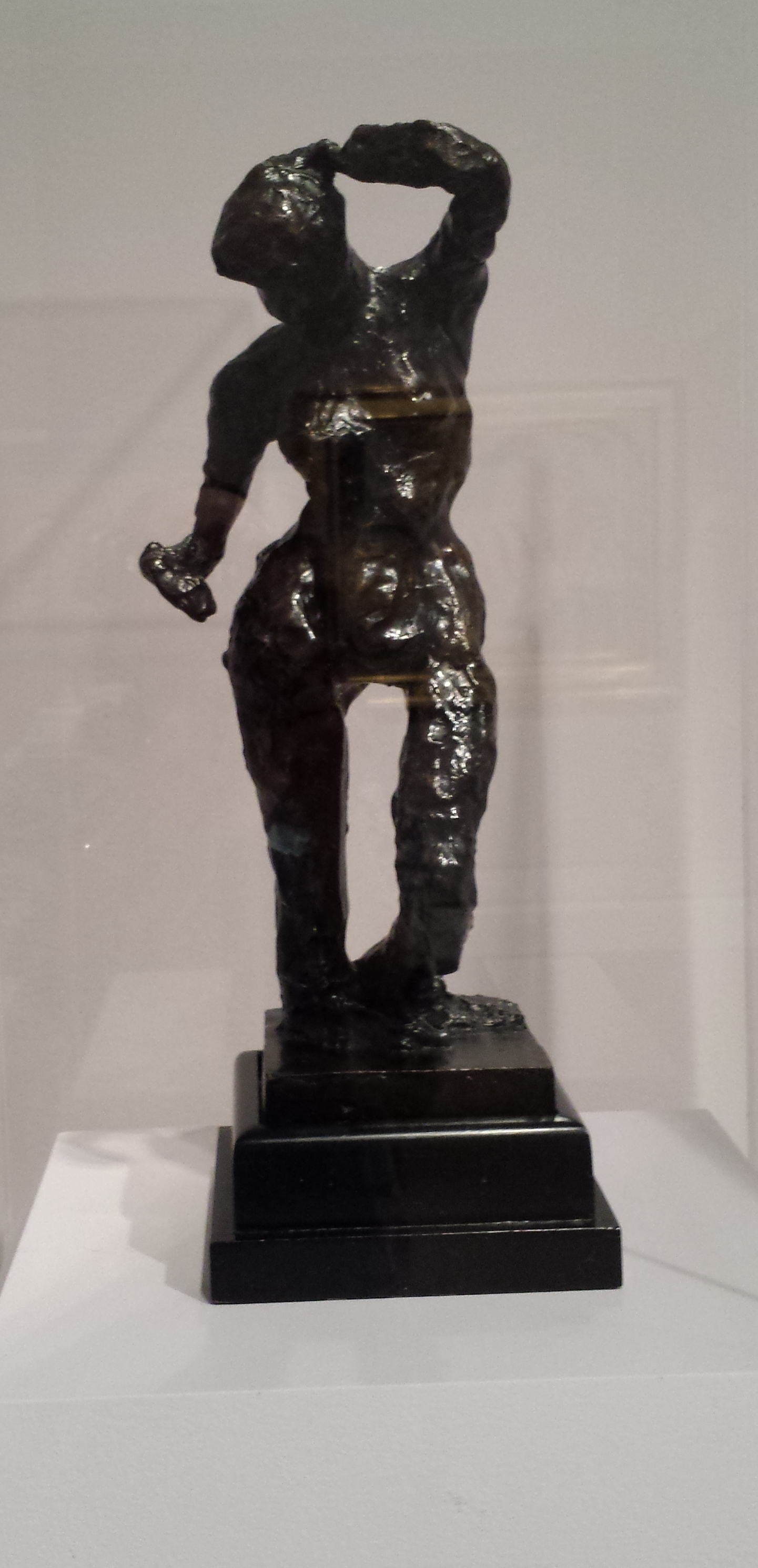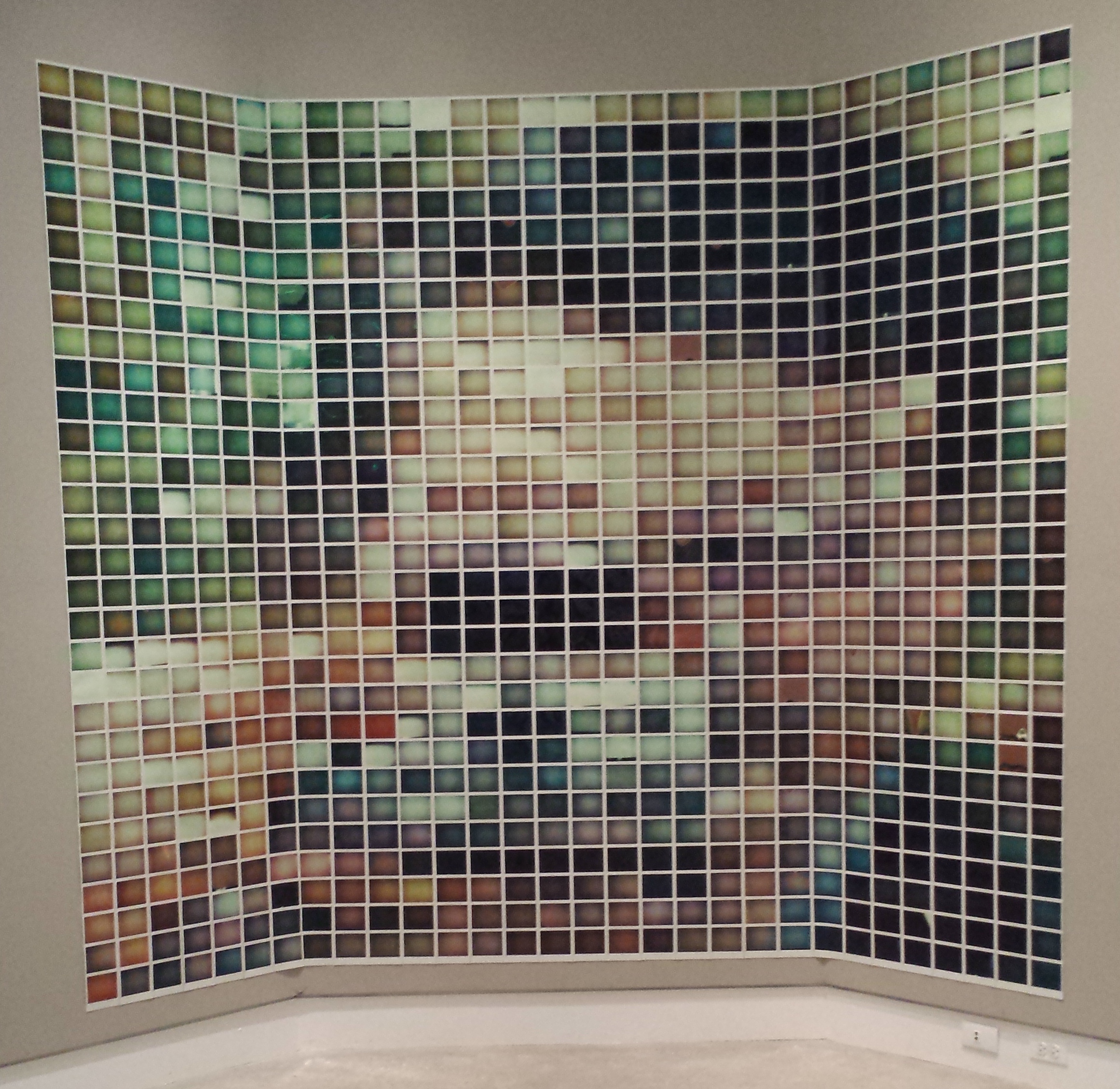
On my recent trip to Florida, in addition to viewing wildlife and water activities, I went to the Norton Museum of Art in West Palm Beach. This was my second visit to the museum.
In 2009, when I first went to the Norton, I was awestruck by a special exhibit showing Ansel Adams’s photographs juxtaposed with Georgia O’Keeffe’s paintings. While I love both Adams and O’Keeffe, I had never considered their work side by side before. The 2009 exhibit, called “Natural Affinities”, showcased their different techniques and styles, but similar subject matter. The two artists were friends and discussed their work. After walking through the exhibit, I could see her art in his photos and his photos in her art.
I didn’t see anything on this second trip that impressed me as much as the Adams/O’Keeffe display in 2009. I did, however, learn something from one of the regular exhibits in the Norton. Rather than being led to reflect on how two very different artists collaborated, as I had been in 2009, this time I was struck by how one artist can explore different media to expand his or her creativity.
I knew that Edgar Degas often painted ballerinas and other dancers, and I was vaguely aware that he did some sculpting. But I never considered why he sculpted. According to information at the Norton, late in life, Degas created figurines for his own satisfaction, “not to take a rest from painting or drawing, but to give more expression, more spirit, and more life to my paintings and drawings. They are exercises to get me started.”
Here is Degas’s figurine “Dancer Looking at the Sole of Her Right Foot”:

Moreover, I was not at all aware that Henri Matisse had also sculpted in addition to painting. In contrast to Degas, Matisse apparently used sculpting “as a respite from painting, to allow him to find solutions to creative problems.” (see placard in Norton Museum of Art)
In this sculpture of “The Dance”, Matisse was working on “how surfaces define form” and how to “accentuate qualities of light and shadow”:

I have never done any painting or sculpture, and the problems Degas and Matisse faced in their work are foreign to me. However, the figurines by Degas and Matisse led me to think about how writers sometimes explore different forms to discover an appropriate point of view and emotional intensity for their work.
One writer friend of mine is working on a memoir, which he started in the first person. When he had difficulty with that format, he began again in the third person, and is having a much easier time telling the story.
I did the same thing with a short essay once, writing it first in the third person, which seemed safer. Once I had worked out the emotions and the story arc, I converted it to first person.
I have known other writers who start their work as a poem, then shift to prose—and vice versa.
And novelists are often advised to write a diary or character sketch of their protagonist to develop backstory that may not ever end up in the novel, but which will enrich the character’s dialogue and internal thoughts.
The Norton provided me with one other “ah-ha!” moment. In a special exhibit of Polaroid pictures (I can’t call them “snapshots,” because many were artistic studies far beyond the quick pix most of us took in our living rooms in the 1970s), there was a large work by Matthew Brandt billed as an “analog equivalent of a digital portrait.” Each Polaroid picture is the equivalent of a “pixel” in today’s digital works.

The fascinating aspect of this work is that it looks better seen through a cellphone’s camera than it does in reality through the human eye. It didn’t look like much of anything when I stared at it on the wall, but through my cellphone, I could see the man with his Polaroid camera. Can you see the man and camera in this photo?
Like many things in life, the Brandt work requires a different perspective than we usually have to see what’s there. I try to make sense of my life through writing, but trips to museums like the Norton let me open my eyes and mind to new perspectives and learn more about myself and about the world.
When have your eyes been opened by a trip to a museum?




So true about genre. So often I find poetry doesn’t work as well for certain subjects. They need to be fleshed out in prose.
I’m always fascinated when someone takes a poem and makes it prose, or vice versa. Different facets of the subject come to light in each genre.
Thanks for the comment,
Theresa
[…] Norton Museum: Thinking Differently About Art, Writing, and Life […]
Sorry Theresa. I just see a bunch of squares. Maybe I should spend more time in museums.
Sally, try opening the post on your cell phone. I’ve found the smaller the image, the easier it is to see the man and camera.
Theresa
Theresa, what a great post. Years ago I went to a Georgia O’ Keeffe exhibition in Washington, D.C. It was wonderful to see her artwork in person and see the progression of her work. I would have so wanted to see the juxtaposition and similarities of her and Adam’s works. Many of the photographers and artists from that era ran around in the same circles so I imagine that at times they were influenced by one another.
There is one museum exhibition that immediately come to my mind. The first is a showing by an artist that made objects designed with children in mind but I don’t think they were meant for real play. I apologize I don’t remember his name (this was a side exhibition to the main one by O’ Keeffe) but he built toy airplanes, cars, etc. what was most interesting was that it was made of beautiful wood and colorful little knobs and gadgets as attachments. What I remember most however, was the feeling of whimsy, childlike innocence, and space. Space sounds strange but that comes to my mind. That was more than 15 years ago and that’s how much his work resonated in me. There is something wonderful about going to museums and clearing the mind and stepping into someone else’s dimension.
Nareen,
Glad you enjoyed the post. Museums are really good places to open your mind.
Theresa
I’ve always been a big fan of Ansel Adam’s work. Oh yes, I definitely see the man with the camera.
I love Ansel Adams also. And O’Keeffe. And Degas. And Matisse. And so many more.
Thanks for reading,
Theresa
Taking this trip through your eyes was really interesting. Thank you. I particularly found the polaroid shot was interesting in that you couldn’t see it w/out the photo! A photo of photos….
Thanks, Janet. Glad you enjoyed it. The Polaroid was interesting — another reminder of how we need to step back to see the forest when we’re in the middle of the trees.
Theresa
Reblogged this on Lavender Turquois.